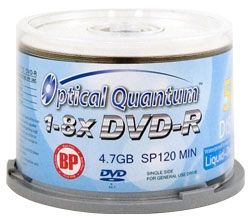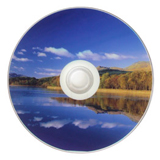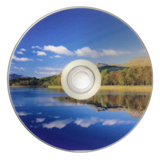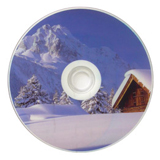1. Introduction
 An ever increasing number of users, be it for personal or professional use, produce their own CDs and DVDs. This is evidenced by the increase in duplicators being sold on the market. And while many of you may think that the only people interested in duplicators are those involved in CD and DVD piracy, the truth is very different. The biggest customers of duplicator manufacturers are educational institutions, churches, libraries, clubs, and users like myself, who produce presentation CDs and DVDs for customers.
An ever increasing number of users, be it for personal or professional use, produce their own CDs and DVDs. This is evidenced by the increase in duplicators being sold on the market. And while many of you may think that the only people interested in duplicators are those involved in CD and DVD piracy, the truth is very different. The biggest customers of duplicator manufacturers are educational institutions, churches, libraries, clubs, and users like myself, who produce presentation CDs and DVDs for customers.
One of the nice touches has always been the ability to print the CD label. Originally, to do this, you had to print your image on stick-on CD labels, available 2 on an A4 sheet. The results were quite good, but if you had a lot of discs to do, it was a real headache (and took time) having to stick the labels onto the discs once they were printed. Then along came the printable CD and DVD disc. You could now print directly onto the disc, saving time and the tortuous task of sticking on hundreds of labels. The drawbacks were that you had to have a printer that was capable of printing on CDs (this isn't so bad, there are plenty available now) and the disc's printed surface couldn't come in contact with anything liquid. The second was the more serious problem. The ink would simply smudge, run, and generally ruin the appearance of the disc.
Now, it is very rare that a disc will come in contact with any liquids, or at least it's never happened to me. But then, I'm careful with my discs. Accidents do happen however, and it is a shame to spoil a disc (or its appearance in any case). One alternative until recently, was the Lightscribe technology which burns an image on the label side of a disc in the same way that it burns the disc contents. The problem with Lightscribe is that it simply takes too long. Even for a one off job, I am not that patient, for what in the end is a "grayscale" image.
Recently, a number of "water-proof" discs have appeared on the market. At first, I was very skeptical. I had already seen what even a small amount of water could do to ordinary printable discs and while I believed these new discs were probably a great improvement, I didn't think they could totally solve the problem. So when Octave Systems sent us samples of their printable discs, I was very keen to put them to the test.
Octave Systems (http://www.octave.com) is a good place to find just about anything you need if you're going to be producing your own CDs and DVDs. They have a comprehensive web site and a very good online store. They sell quality, top-rated CD/DVD recorders, CD DVD duplicators, recording software, CD-R, DVD media and CD/DVD writing accessories.
Octave sent us five different types from their Optical Quantum BP range of disks to trial:
- 52X CD-R White Inkjet Printable
- 52X CD-R Silver In jet Printable
- 8X DVD-R White Inkjet Printable
- 8X DVD-R Silver Inkjet Printable
- 16X DVD-R White Inkjet Printable
To print on the CD and DVD disc surfaces, I used my Canon PIXMA iP3000 and CD-LabelPrint, a program that comes with the printer for printing labels. The results below:

White Inkjet Printable | 
Silver Inkjet Printable |

White Inkjet Printable |
The print quality is very good. I've printed 3 discs as you can see above. The difference between the White and Silver Inkjet printable discs is that the picture with the Silver disc is softer and lighter. Anyone who has used printable media before and has used both White and Silver will already know this. The third disc above is one which has primarily white in its picture, and again the final result is very good.
But the real test, and the purpose of this review, is to see how the discs fair when they come into contact with liquids.
2. Tests and Conclusion
Before we look at the results after wetting the discs, it wouldn't be any good to have even 100% water-proof discs if the discs themselves were not very good quality. The table below shows the media ID as reported by Nero Infotool, for each of the discs we received.
| Disc |
Media ID |
| 52X CD-R White/Silver Inkjet Printable |
No ID, but looking at the Octave Systems web site, shows the manufacturer to be CMC Magnetics |
| 8X DVD-R White Inkjet Printable |
TTH01 |
| 8X DVD-R Silver Inkjet Printable |
TTH01 |
| 16X DVD-R White Inkjet Printable |
TYG03 |
The discs are among the best, but of course, it also depends on the burner and how well it burns the particular discs.
And now to the tests. Octave had kindly sent us enough discs to be able to do a few prints, so I decided to go all the way with the first few discs. I put them under the tap and let the water run freely, for about 15 seconds with each disc. To my surprise, there was no ink running and in fact, no visible sign of any damage at all. I let the discs stand for a while, to see if they would dry off. On a couple I gently began to dry them with a paper towel. I looked at the towel and there was no ink. So I started to wipe across the disc surface. This time there was a small amount of ink on the towel but no smudging or blurring on the disc. This was amazing.
The images below show the discs after they were drowned under the tap:

The disc after having been drenched under the tap.

Around the centre, there's an almost square patch that looks like it has faded. Even after drying completely, the spot remains and when examined closely with the naked eye, the patch is simply a little shinier, glossier than the rest of the surface, but no ink has run.

This is the other disk, which was wiped with a paper towel, as it appears after having dried out. There's no trace of ink runs or smudging.
As a final test, I put some methylated spirits on a piece of paper towel and wiped across the surface of one of the discs. Some ink came off onto the paper towel but again, there were no visible marks on the discs's surface. As I wiped some more, more came off but it didn't show up on the disc itself. I'm sure that if I wiped long enough on one spot, it would eventually fade but that isn't the point of the exercise. I was happy (and pleasantly surprised) to see that the image on the disc was as good as when I had initially printed it.
I quickly navigated to the Octave Systems web site to have a look at the price for these discs. The table below also shows the price for standard printable media:
| |
Standard Printable |
Water-Resistant Printable |
| CD-R |
US$39.00 for 100 discs |
US$22.50 for 45 discs |
| DVD-R 8X |
US$59.00 for 100 discs |
US$27.00 for 45 discs |
| DVD-R 16X |
US$69.00 for 100 discs |
US$29.95 for 45 discs |
There's a bit of a difference in the price of CD-R media. 100 water resistant discs cost US$50 going by the above table, so the cost is about 25% more than standard printable discs. The choice is up to you, if its worth the extra cost or not. With DVD-R media on the other hand, the difference for 100 discs is only about 1$ more for 8X water-resistant media and surprisingly, the water-resistant discs are a few dollars cheaper than the standard printable per 100 for 16X.
All in all, I was quite surprised at just how well these discs stand up to liquids. I had expected some improvement over the printable discs I had been using, but not as good as it finally proved to be. So for your next batch of discs, definitely give these a go.